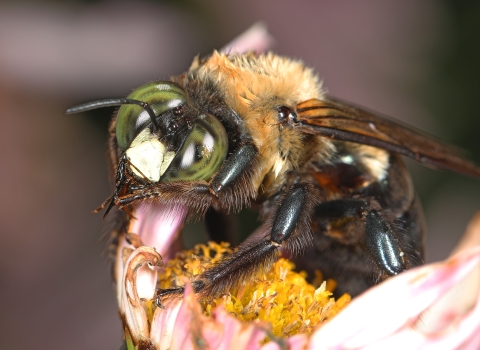In November, Southwest Idaho was experiencing an outbreak of avian cholera. The outbreak is believed by the Idaho Department of Fish and Game to be linked to higher than normal numbers of migrating snow geese, with juvenile snow geese being primarily affected. The presence of highly pathogenic avian influenza is thought to be contributing to mortalities as well.
Disease is a natural part of the life cycle for wildlife and the ecosystems that the U.S. Fish and Wildlife Service is responsible for protecting, but sometimes action is required to help prevent its continued spread. At Deer Flat National Wildlife Refuge in Nampa, Idaho, volunteers, partners and refuge staff spent several days in late November responding to the suspected outbreak of avian cholera and highly pathogenic avian influenza, hoping to limit its continued spread. Refuge staff will continue to monitor the situation and pick up dead waterfowl as necessary.
“We are grateful for the assistance from folks with Idaho Department of Fish and Game, Canyon County Marine Patrol, Canyon County Parks, Lower Snake River Compensation Plan, the Boise Ecological Services Office and several volunteers,” said Refuge Manager Eddie Owens. “The snow and ice made it difficult to collect the birds, but everyone stayed focused and safe while helping wildlife and the refuge.”
Each day began with a safety briefing and then the group was broken into small teams. The teams searched for dead waterfowl by boat, utility terrain vehicles and by foot. Snow, ice, strong winds and freezing temperatures made searching difficult. Despite the challenges, staff and volunteers picked up and buried an estimated 2500 birds over two days.
The volunteers, partners and biologists that responded to the current situation have all been trained to prevent further spread of the bacteria and virus. They also wore the appropriate protective gear when handling any sick or dead waterfowl. Visitors should not approach or touch any birds that may appear to be dead, sick or are exhibiting abnormal behavior.
Avian cholera is a bacterial infection caused by Pasteurella multocida. Highly contagious, dead birds are the most common cause of the bacteria’s spread. Biologists believe that, in some cases, removing birds that have died will help prevent continued spread.
Highly pathogenic avian influenza is present across the Pacific Flyway, which includes Idaho. The virus is easily transmissible and can be passed by contaminated individuals and surfaces like clothes and boots. Biologists working to prevent the spread of the virus must wear protective gear and gloves. Though rare, highly pathogenic avian influenza can be transmitted to humans.
Unfortunately, for birds that show symptoms of avian cholera or influenza, there is no treatment. Mortality is the most likely outcome for an individual bird that has contracted either illness.
“It was hard to see so many dead or dying animals. It's one of those things that is inherently difficult, but we did it together and looked out for each other,” said one volunteer. “Picking up that many animals and getting them out of the environment did feel like it was helping the birds who are still out there, and hopefully they will make it to their migratory destinations and thrive.”
The U.S. Fish and Wildlife Service works with others to conserve, protect and enhance fish, wildlife, plants and their habitats for the continuing benefit of the American people. For more information, visit https://www.fws.gov/about/region/pacific and connect with us on social media: Facebook, Instagram, Twitter, LinkedIn, Flickr, and YouTube.





